Abstract
Two monkeys (M. mulatta) were trained to press a telegraph key after onset of a tone and release it quickly in response to a subsequent light or click stimulus occurring after a variable interval. After training first with a fixed time limit on response latency for key release and then with a continuously adjusting limit, reaction time to click was 160 msec and to light, about 200 msec. Temporal contingencies or “payoff bands” were then introduced which reinforced only responses with latencies which fell between two limits 50 msec apart. Feedback was given as to whether each latency was too slow, within the band, or too fast. A trained monkey could precisely center its latency distribution on any 50 msec-wide payoff band located from 200 to 600 msec after the stimulus, with from 60 to 80% of its responses achieving reinforcement. Distribution statistics were comparable to those of trained human subjects. Because such precise timing might be accomplished by a peripheral adjustment, such as changing the manner of holding the key, latency of electromyographic activation was measured in participating arm muscles in one monkey. Electromyographic activation preceded key release by a constant interval, regardless of response latency, indicating a more central mechanism for timing of brief intervals.
Full text
PDF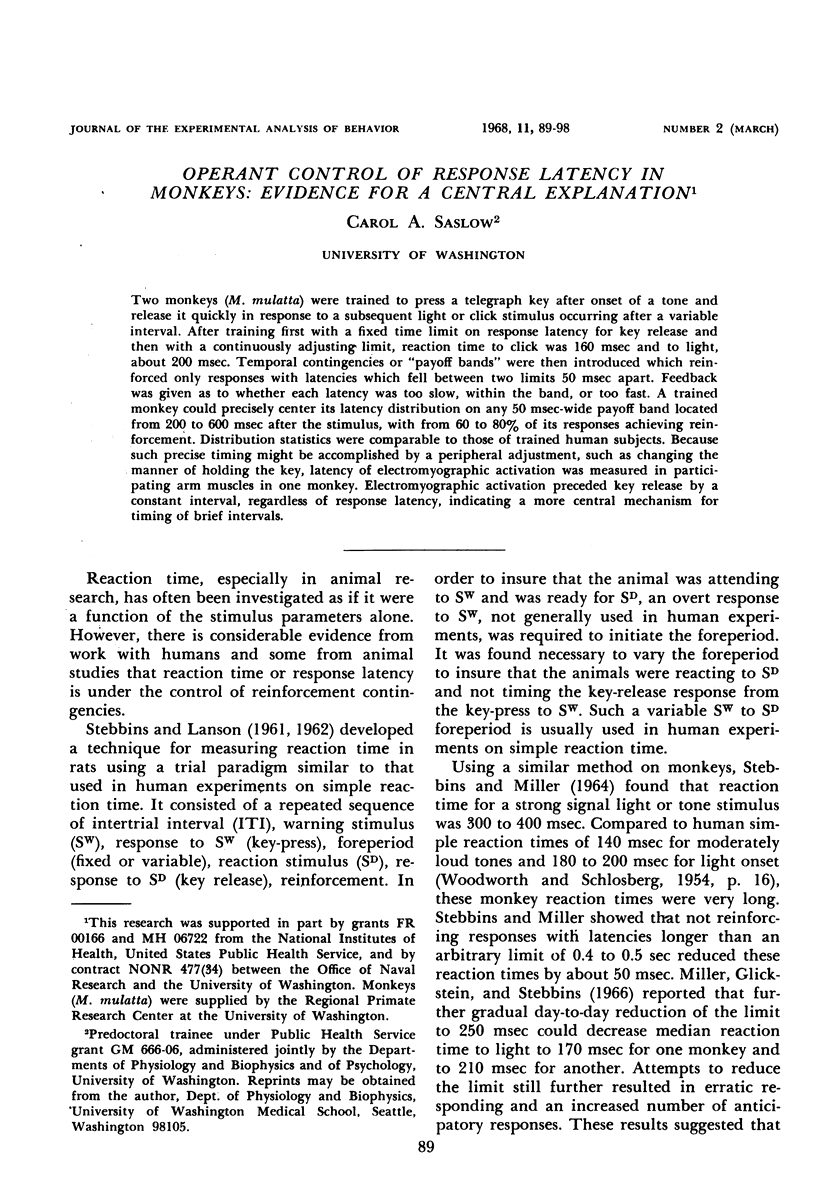

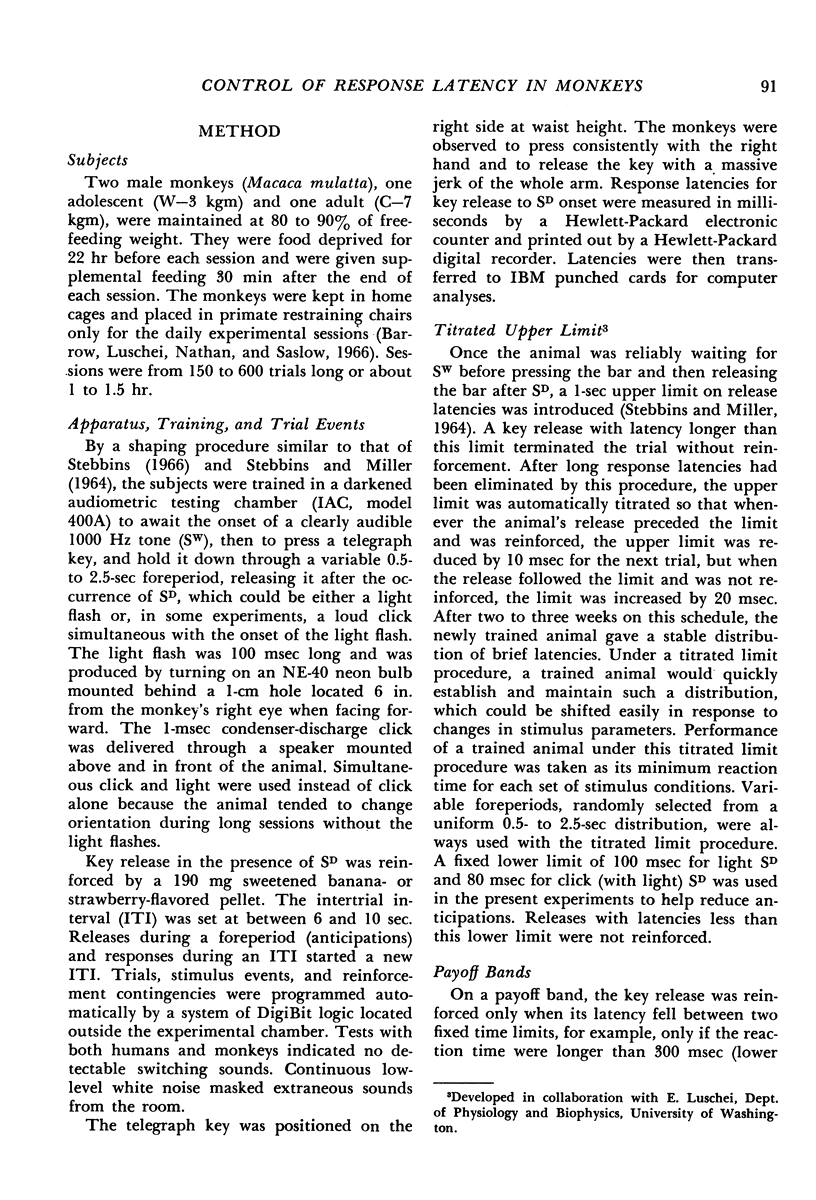
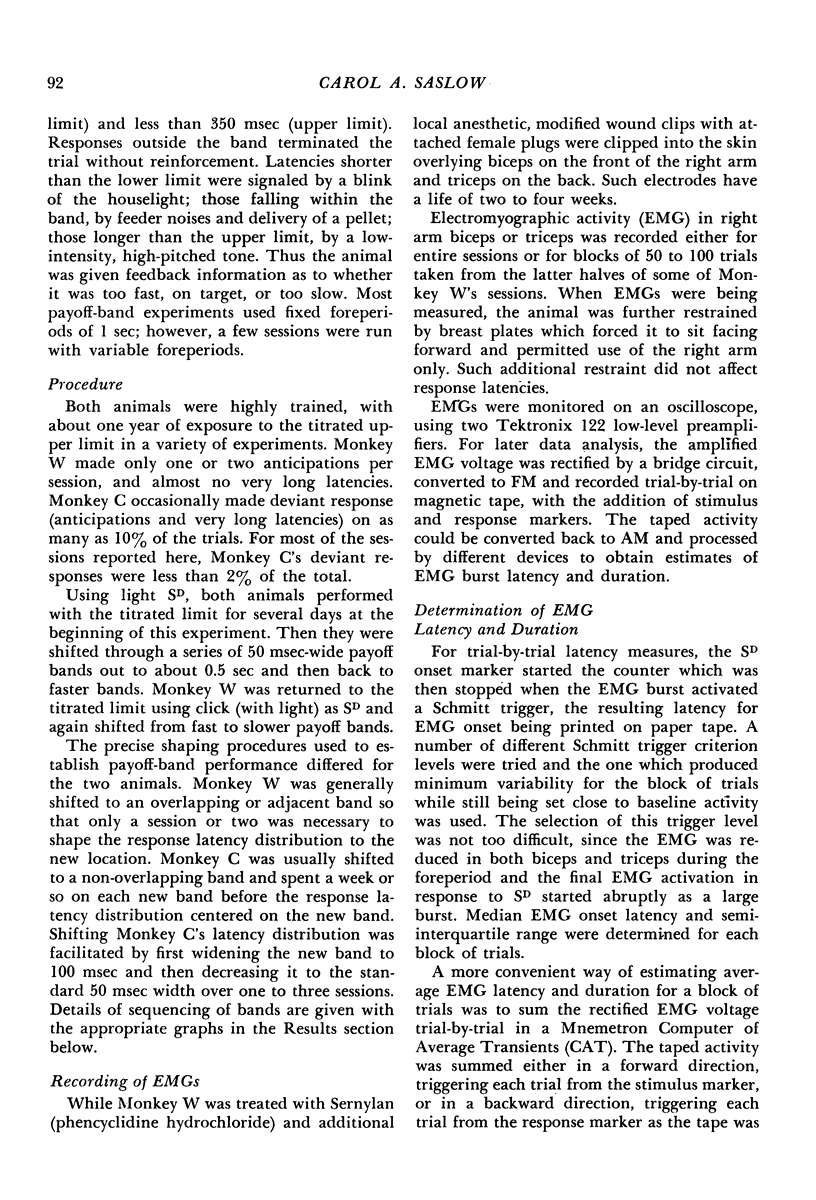
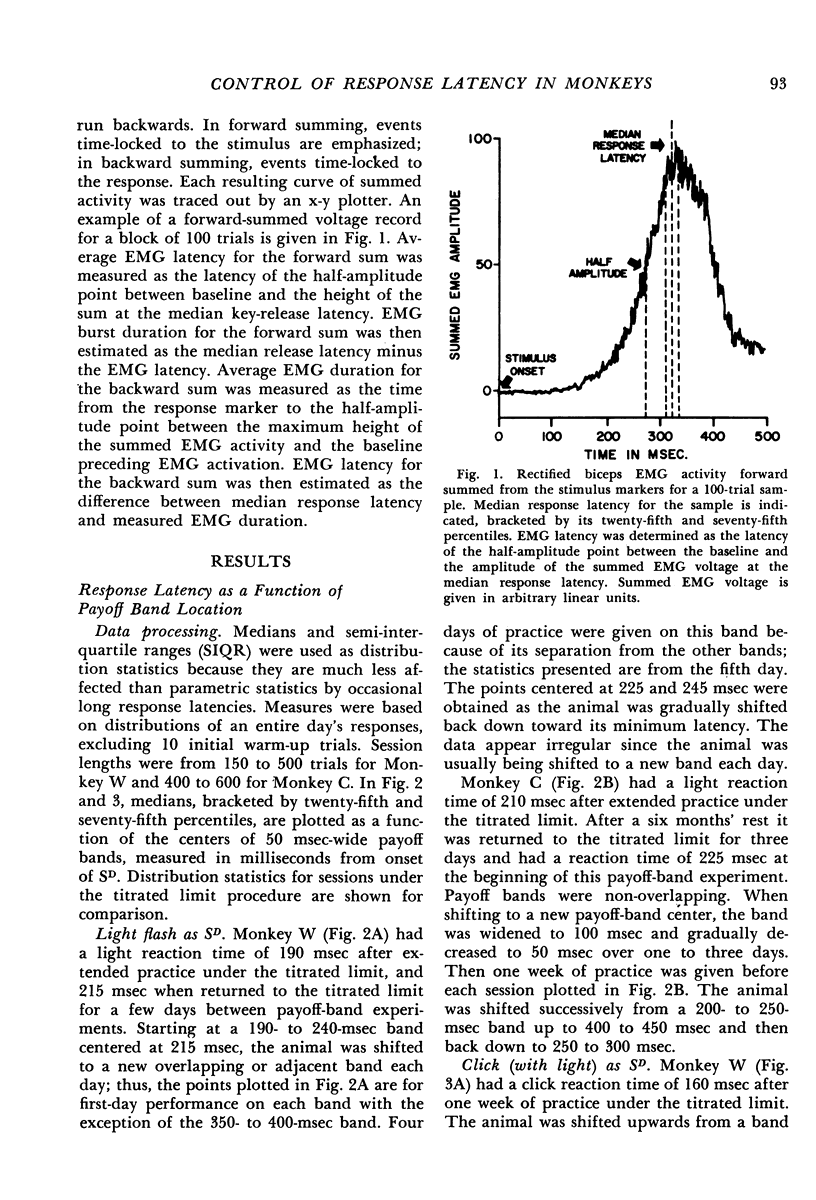

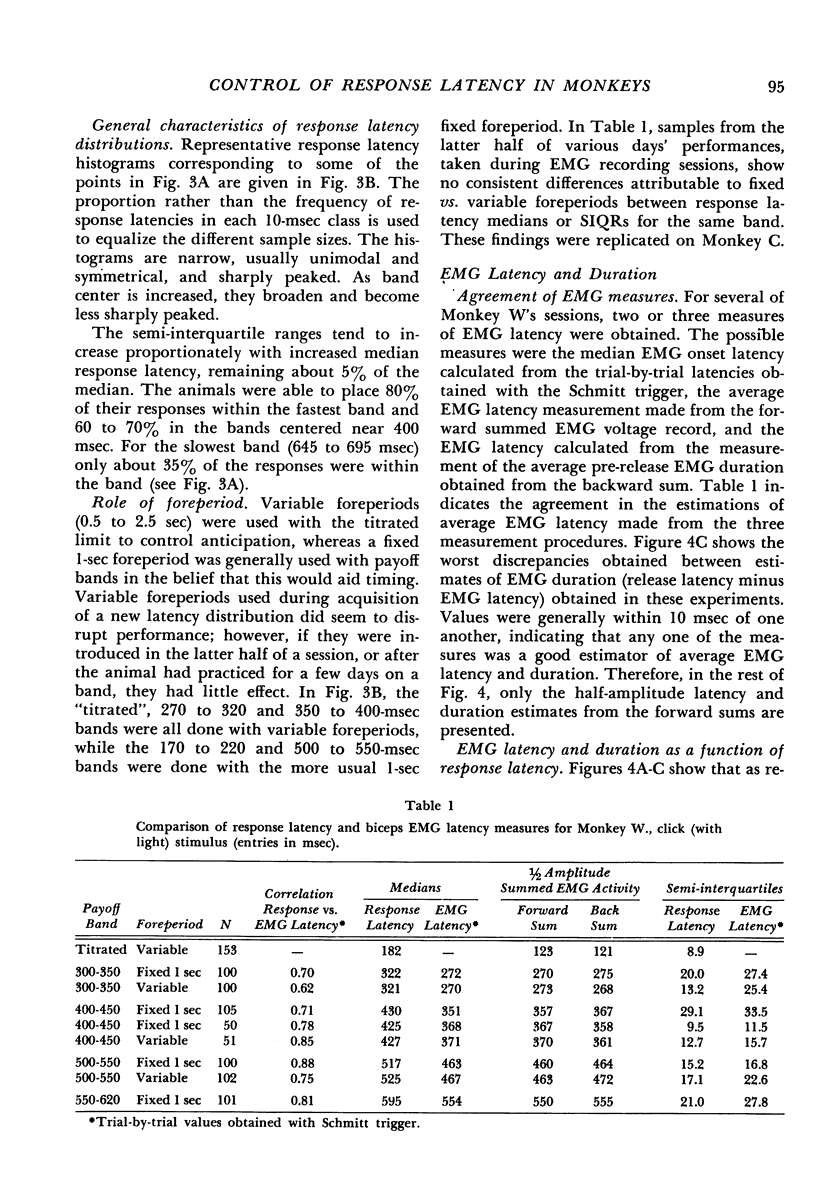
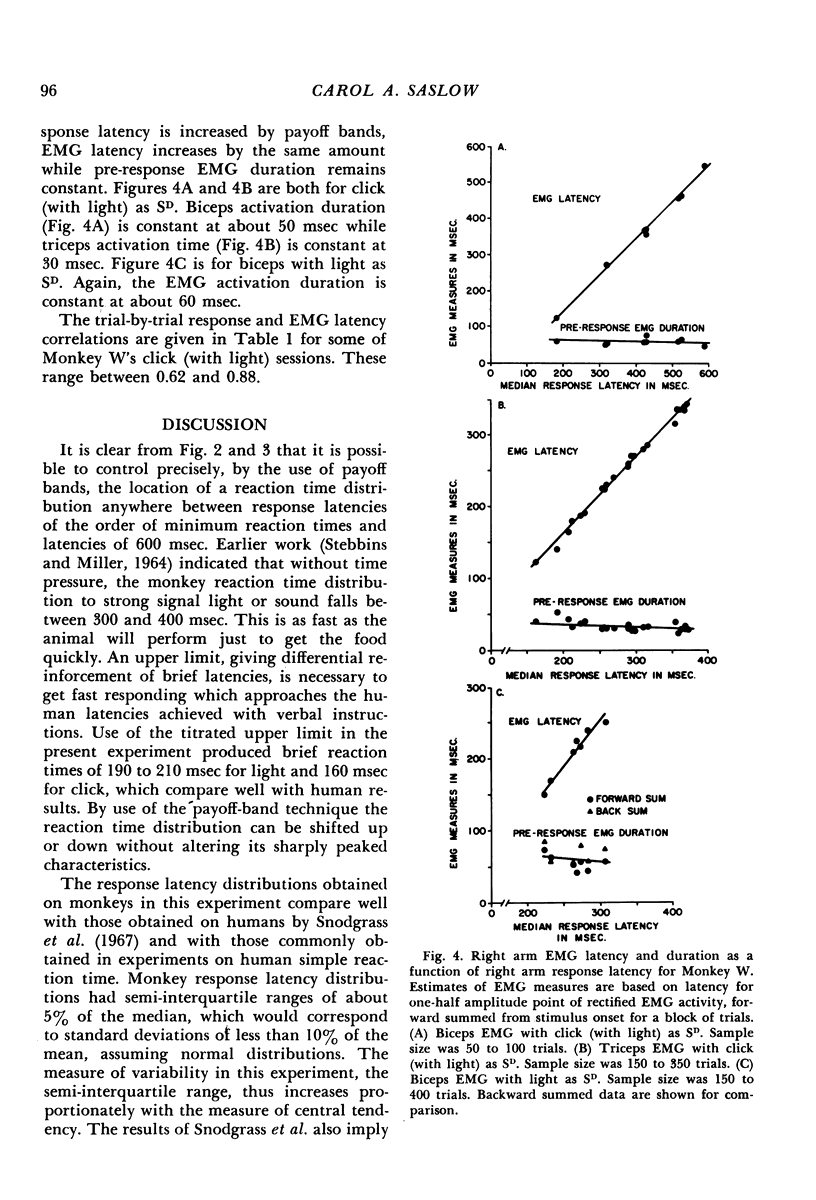
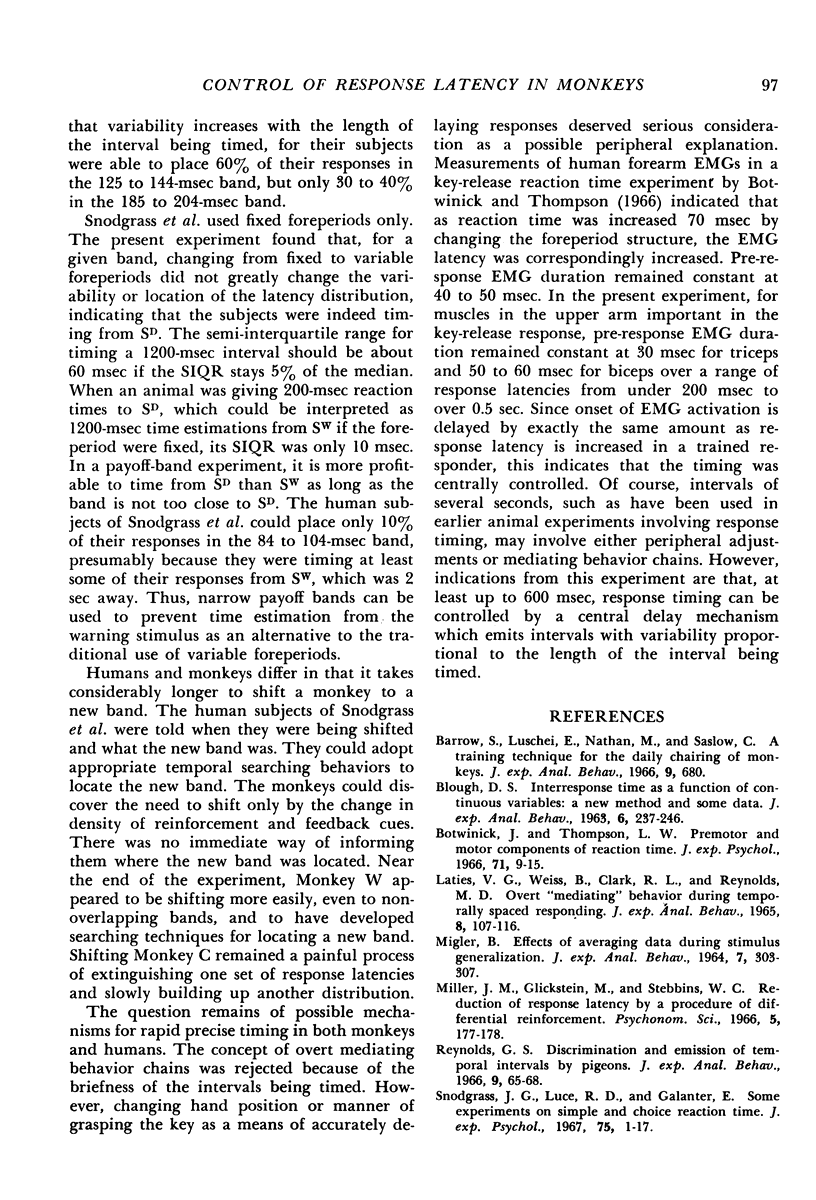
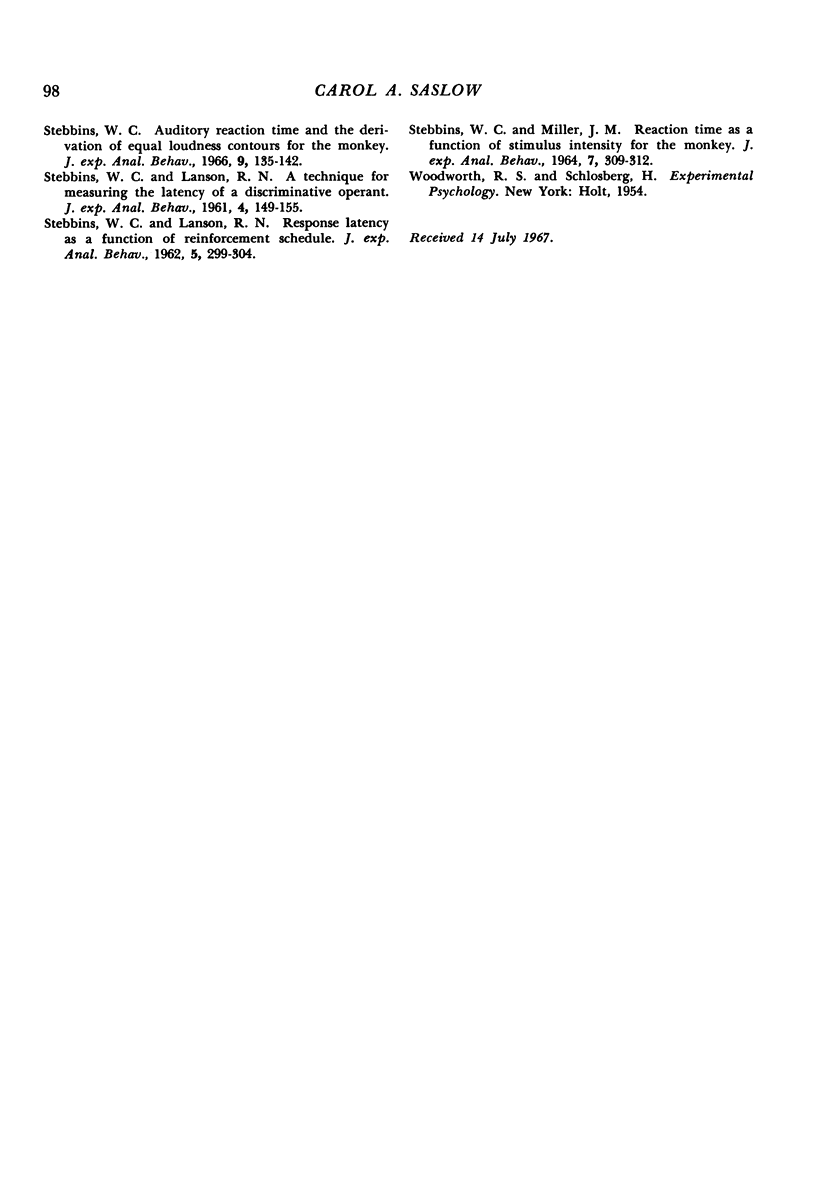
Selected References
These references are in PubMed. This may not be the complete list of references from this article.
- Barrow S., Luschei E., Nathan M., Saslow C. A training technique for the daily chairing of monkeys. J Exp Anal Behav. 1966 Nov;9(6):680–680. doi: 10.1901/jeab.1966.9-680. [DOI] [PMC free article] [PubMed] [Google Scholar]
- Blough D. S. Interresponse time as a function of continuous variables: a new method and some data. J Exp Anal Behav. 1963 Apr;6(2):237–246. doi: 10.1901/jeab.1963.6-237. [DOI] [PMC free article] [PubMed] [Google Scholar]
- Botwinick J., Thompson L. W. Premotor and motor components of reaction time. J Exp Psychol. 1966 Jan;71(1):9–15. doi: 10.1037/h0022634. [DOI] [PubMed] [Google Scholar]
- LATIES V. G., WEISS B., CLARK R. L., REYNOLDS M. D. OVERT "MEDIATING" BEHAVIOR DURING TEMPORALLY SPACED RESPONDING. J Exp Anal Behav. 1965 Mar;8:107–116. doi: 10.1901/jeab.1965.8-107. [DOI] [PMC free article] [PubMed] [Google Scholar]
- MIGLER B. EFFECTS OF AVERAGING DATA DURING STIMULUS GENERALIZATION. J Exp Anal Behav. 1964 Jul;7:303–307. doi: 10.1901/jeab.1964.7-303. [DOI] [PMC free article] [PubMed] [Google Scholar]
- Reynolds G. S. Discrimination and emission of temporal intervals by pigeons. J Exp Anal Behav. 1966 Jan;9(1):65–68. doi: 10.1901/jeab.1966.9-65. [DOI] [PMC free article] [PubMed] [Google Scholar]
- STEBBINS W. C., LANSON R. N. Response latency as a function of reinforcement schedule. J Exp Anal Behav. 1962 Jul;5:299–304. doi: 10.1901/jeab.1962.5-299. [DOI] [PMC free article] [PubMed] [Google Scholar]
- STEBBINS W. C., MILLER J. M. REACTION TIME AS A FUNCTION OF STIMULUS INTENSITY FOR THE MONKEY. J Exp Anal Behav. 1964 Jul;7:309–312. doi: 10.1901/jeab.1964.7-309. [DOI] [PMC free article] [PubMed] [Google Scholar]
- Snodgrass J. G., Luce R. D., Galanter E. Some experiments on simple and choice reaction time. J Exp Psychol. 1967 Sep;75(1):1–17. doi: 10.1037/h0021280. [DOI] [PubMed] [Google Scholar]
- Stebbins W. C. Auditory reaction time and the derivation of equal loudness contours for the monkey. J Exp Anal Behav. 1966 Mar;9(2):135–142. doi: 10.1901/jeab.1966.9-135. [DOI] [PMC free article] [PubMed] [Google Scholar]
- Stebbins W. C., Lanson R. N. A technique for measuring the latency of a discriminative operant. J Exp Anal Behav. 1961 Apr;4(2):149–155. doi: 10.1901/jeab.1961.4-149. [DOI] [PMC free article] [PubMed] [Google Scholar]


